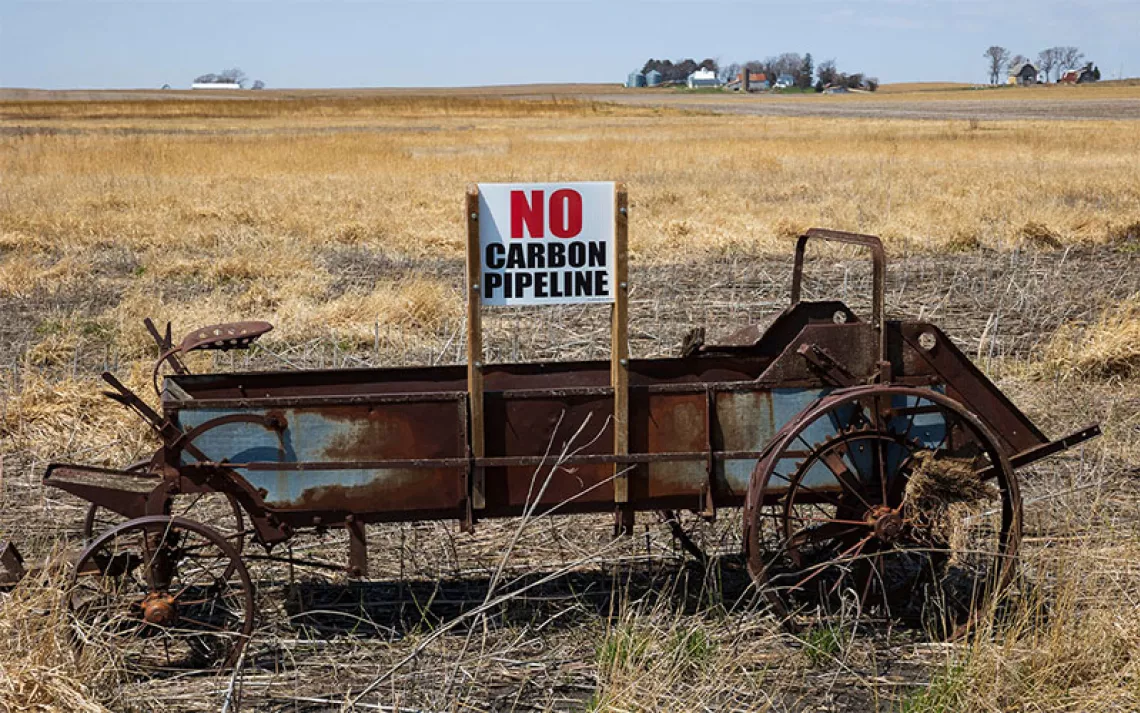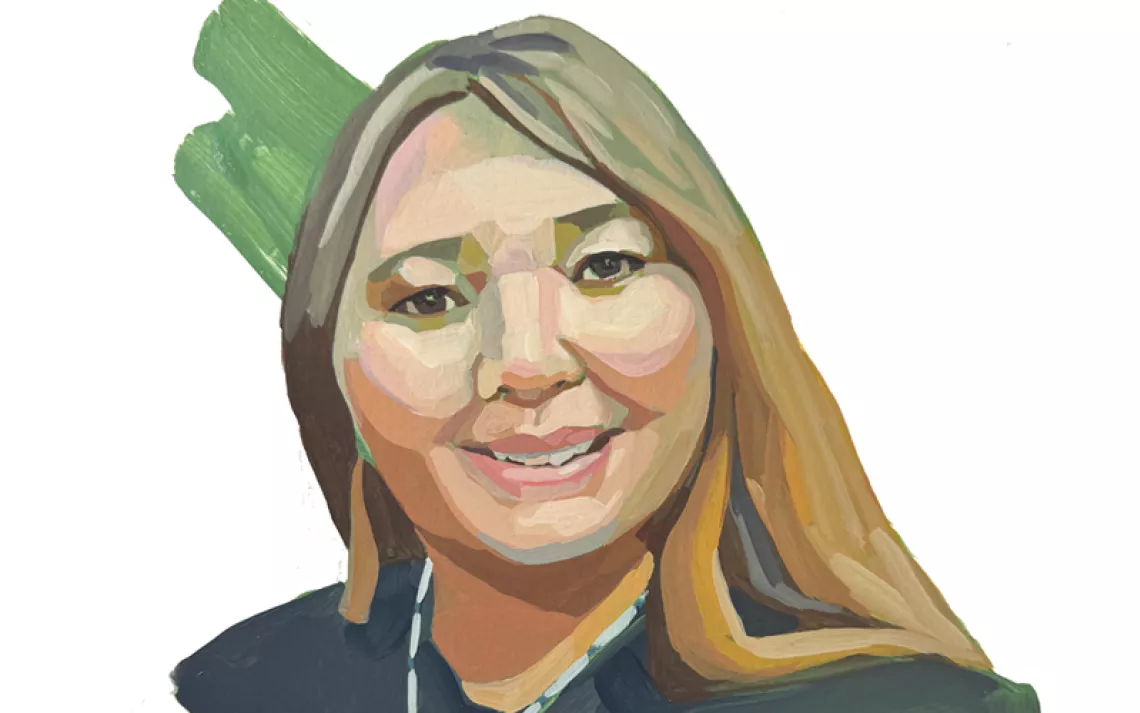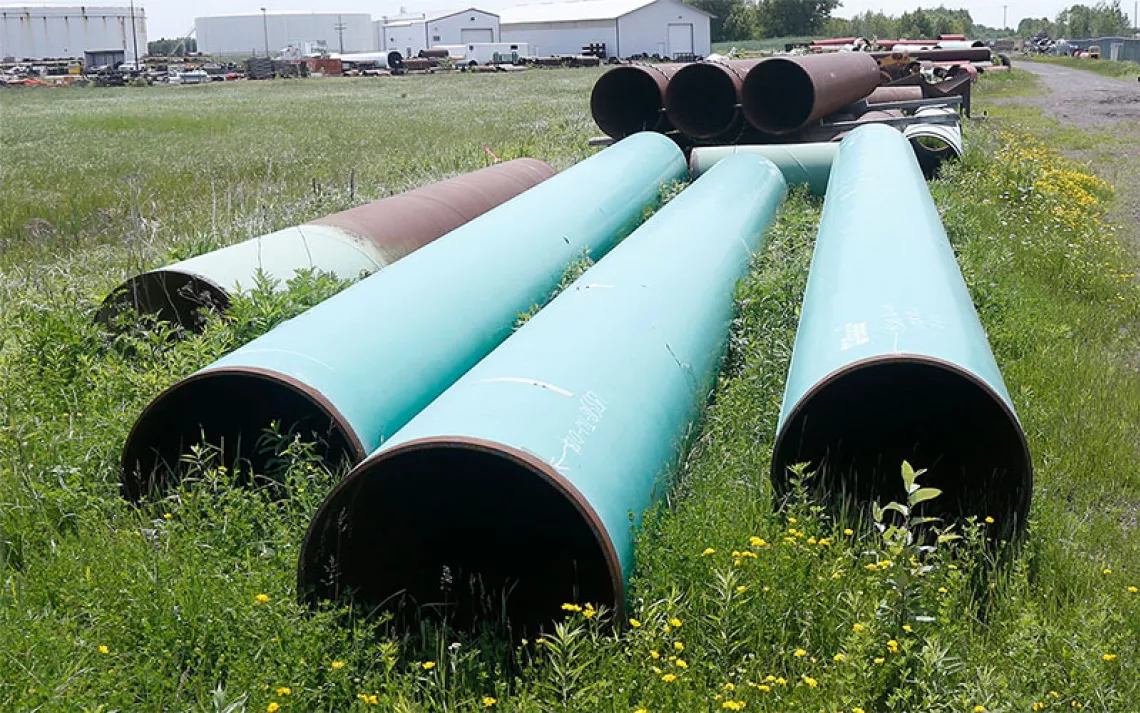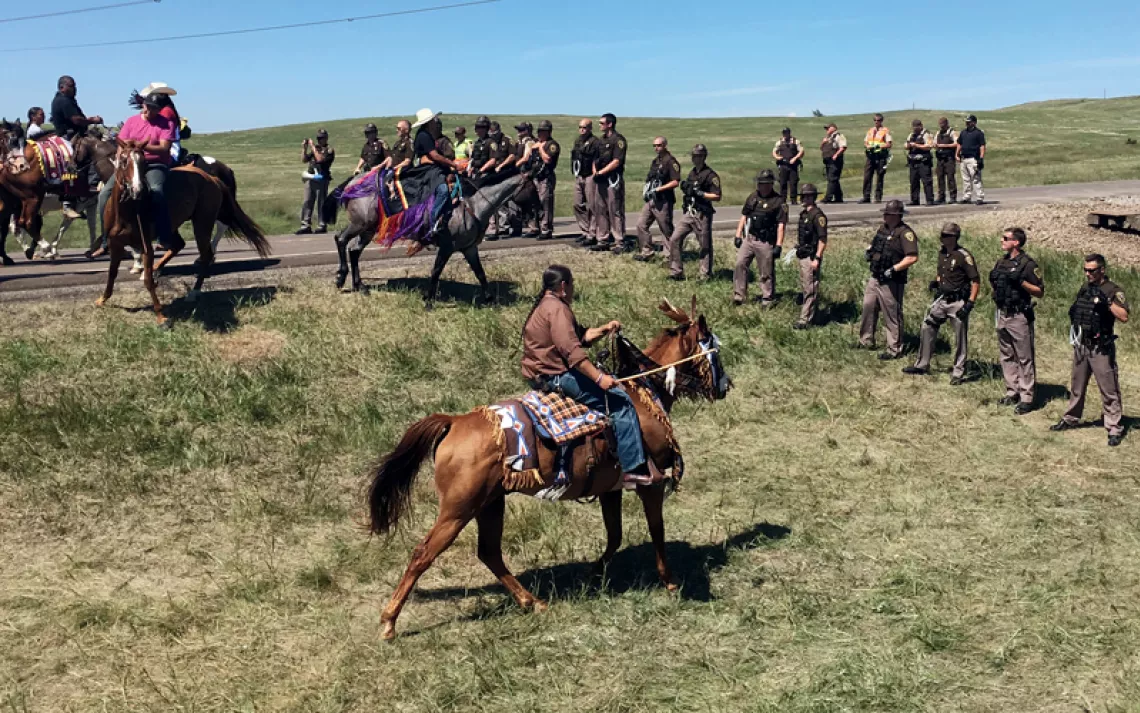A Proposed Pipeline Undermines Anishinaabe Treaty Rights
Enbridge’s Line 3 would cut through treaty lands and sacred wild rice beds

Water protectors at World Action Water Day at the state capitol in St. Paul, Minnesota, on April 19. | Photo courtesy of Chris Juhn
Minnesota, home to over 10,000 lakes and the headwaters of the Mississippi River, is one of the most water-abundant regions in the country, with over 90,000 miles of shoreline. Because of its unique climate, it's one of the few places in the world where true wild rice grows. The rice is sacred to the local indigenous culture.
Before colonial times, Anishinaabe people migrated west seeking “food that grows on the water.” After finding the aquatic grass, they settled around the Great Lakes. Wild rice, or manoomin ( “good berry”) is one of the few remaining cultural artifacts of Anishinaabe culture after peace treaties with the United States stripped much of their land. “It’s the foundation of our identity,” Leech Lake Band of Ojibwe Environmental Director Levi Brown says, regarding wild rice. “It’s the reason we came here. Take that away and who are we?"
That’s a question that Calgary-based energy company Enbridge, an investor in the Dakota Access Pipeline, has apparently failed to ask.
Enbridge wants to build a 36-inch pipeline that would replace an existing line that is now deteriorating across northern Minnesota. The new line would run through the heartland of wild rice beds and the headwaters of the Mississippi River, further afflicting indigenous communities that have already been subjected to pollution and exploitation of their land.
“The fact they don’t acknowledge our territories and built over our bodies and dug up our graves for hundreds of years—the state of Minnesota should be ashamed of itself,” Honor the Earth organizer Eryn Wise says. “The indigenous have seen what they have done and they just won’t allow for any more destruction.”
In 1855, the Anishinaabe ceded 10 million acres of Minnesota’s northern lake country to the federal government but reserved the rights to hunt, fish, gather, and hold ceremony on the lands. Anishinaabe territory was included in a series of 19th-century land treaties to make peace in return for money and goods. Over time, the amount of reserved land for native tribes dwindled as the U.S. government looked to expand and capitalize off timber sales.
Now, buried beneath this resource-laden land and its troubled history lies Enbridge Line 3—a 34-inch pipeline built in the 1960s that ships crude oil from Alberta, Canada, to a terminal in Wisconsin that is adjacent to the bay of Lake Superior. Built before the National Environment Protection Act of 1970, the line didn’t require any environmental review.
The largest inland oil spill in the United States happened in Grand Rapids in early March 1991, catching many environmental advocates in Minnesota by surprise. Line 3 ruptured near the Prairie River (a tributary of the Mississippi River), but fortunately 18 inches of ice kept 1.7 million gallons of oil from flowing further downstream, leaving the spill underpublicized. Line 3 hasn’t gotten any better, suffering six other failures that released at least 2,100 gallons of oil in Minnesota alone, and is corroding "in an exponential fashion," according to one Enbridge engineer.
On top of the major spills, Line 3 has continued to degrade with over 50 percent of its pipe joints suffering from external corrosion. In 2008, Line 3 was operating at 503,000 barrels per day of light crude oil. By 2010, Enbridge lowered pressure of the pipeline to 390,000 barrels per day.
But lowering the pressure has not curbed external corrosion, and it is in fact growing. Roughly 900 pipe joints had corrosion deeper than 50 percent of the pipe-wall thickness, according to an Enbridge report in 2012. Four years later, 3,000 pipe joints had the same amount of corrosion, and that number is only rising.
Brown describes Minnesota’s winding bodies of water like a heartbeat, zig-zagging across the existing Line 3, which has polluted drinking water in the past.
“Do you like drinking water that’s polluted?” he asks. “To be limited to those boundaries—it's finite—and living close to those lines, you fear for your well-being.”
Laura Harms Kennett, an engineer with Enbridge, provided testimony to the state in January, citing the new pipeline’s wall will be 83 percent thicker than the old line. This measure is needed to support the 36-inch pipeline’s larger carrying capacity of tar sands, a more corrosive material to line integrity.
In accordance to the Enbridge Clean Water Act approved last July, the company is required to find a replacement for the original Line 3 by December 31. If not, Enbridge will be subjected to stricter safety requirements and could be forced to stop the flow of oil on the original line until another alternative is found.
On July 3, a Minnesota judge granted a group of 13 young people—“Youth Climate Intervenors”—legal stature as an official stakeholder in the permitting case for Enbridge’s proposal. Enbridge will need the state to grant permit approval in order to begin groundbreaking; a series hearings with the respective parties will take place first.
Rose Whipple, a member of the Santee Dakota and the Ho Chunk tribes who was active at Standing Rock, is one of the 13 youth granted legal stature in the case. She says the best thing people can do is get engaged, raise awareness, and pressure banks to divest from oil companies.
“When I went there [Standing Rock], it was amazing to see so many different people of all different races and genders standing together to defend against one thing that could harm all of us,” she says.
Levi Brown would like to see the original Line 3 that runs directly through the Leech Lake reservation shut down. It would be of no consolation, however, should that lead to sacrificing wild rice land farther south on protected land.
“Leech Lake doesn’t go out of our way to bother anyone,” he says. “We’re living our lives the best we can, and we don’t want Enbridge.”
 The Magazine of The Sierra Club
The Magazine of The Sierra Club



